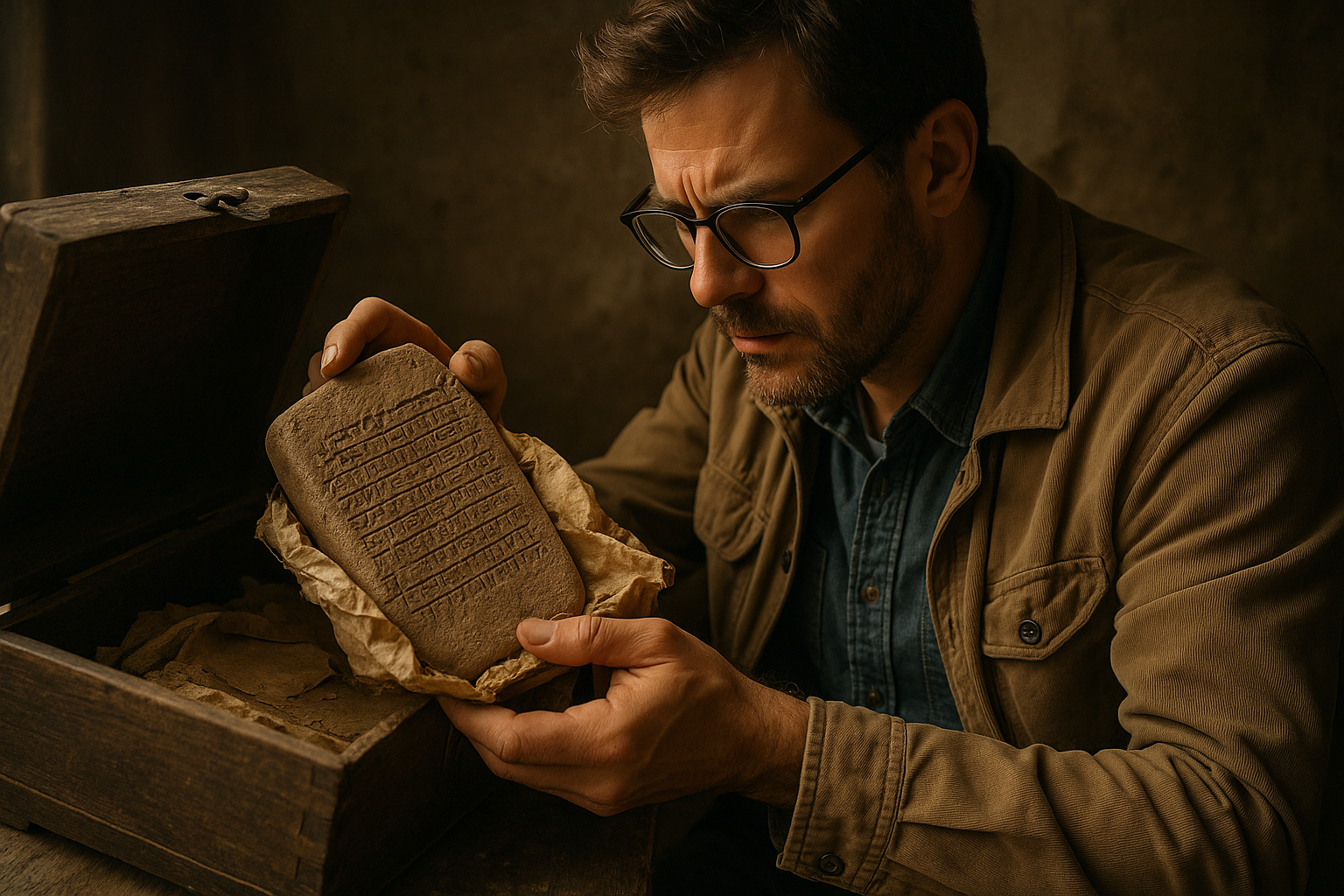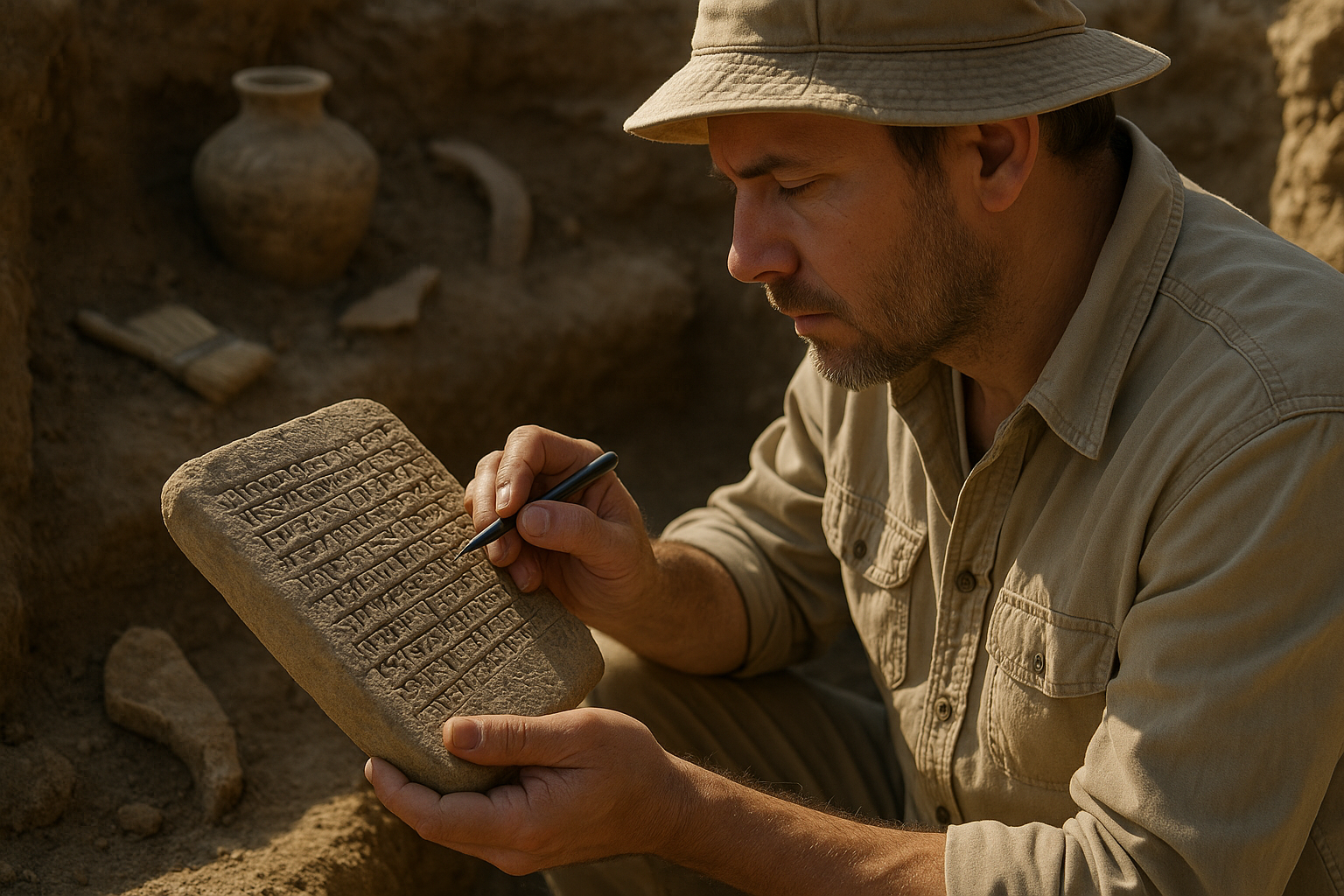Throughout history, royal decrees carved in stone have vanished without trace, leaving historians and archaeologists searching for answers to mysteries that span centuries.
📜 The Eternal Power of Words Written in Stone
When ancient rulers wanted their commands to last forever, they turned to the most permanent medium available: stone. Royal decrees etched into granite, marble, and limestone were designed to withstand the ravages of time, serving as immutable records of laws, treaties, and proclamations. Yet paradoxically, countless numbers of these supposedly indestructible monuments have disappeared from the historical record, leaving behind only fragmentary references in secondary sources and tantalizing glimpses of lost legal systems.
The practice of inscribing royal commands in stone dates back to the earliest civilizations. From Hammurabi’s famous code to Roman imperial edicts, stone inscriptions served dual purposes: they communicated important information to the public while simultaneously demonstrating the permanence and authority of the ruler’s power. The very weight and immobility of stone suggested that these laws were as unchangeable as the material itself.
But what happens when these supposedly eternal monuments vanish? The disappearance of royal stone decrees represents more than just the loss of historical artifacts. Each missing inscription potentially contains unique information about legal systems, political structures, economic arrangements, and social hierarchies that cannot be recovered from any other source. Understanding why and how these treasures disappeared has become a fascinating subfield within archaeology and historical studies.
🏛️ Famous Examples of Vanished Royal Inscriptions
History is filled with references to important stone inscriptions that have subsequently vanished. Ancient writers frequently cited decrees that modern scholars have never been able to locate, creating frustrating gaps in our understanding of past civilizations.
The Lost Decrees of Ptolemaic Egypt
Perhaps nowhere is the problem of missing stone inscriptions more evident than in Ptolemaic Egypt. Ancient sources reference dozens of royal decrees that were reportedly inscribed on stone stelae and placed in temples throughout the kingdom. While the famous Rosetta Stone survived to provide the key to deciphering hieroglyphics, many of its companion decrees mentioned in papyrus documents have never been found. These missing inscriptions would provide invaluable insights into the complex relationship between the Greek-speaking Ptolemaic rulers and their Egyptian subjects.
Greek historians writing during the Ptolemaic period frequently referenced specific decrees by date and location, yet when archaeologists excavate these sites, the stones are nowhere to be found. This suggests that the disappearances occurred after the ancient period, possibly during medieval or early modern times when ancient monuments were often repurposed as building materials.
Roman Imperial Edicts in Bronze and Marble
The Roman Empire was particularly prolific in creating permanent records of imperial decrees. Emperors routinely ordered their most important pronouncements to be inscribed on bronze tablets or marble slabs and displayed in public spaces throughout the empire. Roman writers reference hundreds of such inscriptions, yet only a fraction survive today.
One particularly intriguing case involves the so-called “Edict on Maximum Prices” issued by Emperor Diocletian in 301 CE. This comprehensive price control decree was reportedly posted throughout the empire on stone monuments. While fragments have been recovered from various locations, the complete text has never been reconstructed, and many known copies have vanished entirely. The missing sections might contain crucial economic data about ancient pricing structures and trade networks.
🔍 Why Do Stone Monuments Disappear?
The disappearance of seemingly indestructible stone inscriptions might seem mysterious, but archaeologists and historians have identified several common causes for these losses. Understanding these factors helps explain patterns in what survives and what vanishes from the historical record.
Deliberate Destruction by Political Opponents
Throughout history, conquering powers have systematically destroyed the monuments of their predecessors. This practice, known as damnatio memoriae in Roman times, involved the intentional erasure of a ruler’s legacy by destroying physical reminders of their reign. Stone inscriptions, as the most visible symbols of royal authority, were prime targets for such destruction.
Egyptian pharaohs regularly ordered the defacement of their predecessors’ monuments. Conquistadors in the Americas destroyed countless indigenous stone inscriptions. Ottoman forces dismantled Byzantine monuments. Each wave of political change potentially eliminated irreplaceable historical records carved in stone.
Reuse as Building Material
Perhaps the most common fate of ancient stone monuments was recycling. Throughout the medieval period and into early modern times, ancient inscribed stones were routinely broken up and reused in new construction projects. The practical value of pre-cut stone blocks often outweighed any historical or cultural considerations.
Many European churches and castles contain fragments of Roman inscriptions embedded in their walls. In Egypt, Islamic-era buildings incorporate pharaonic blocks with hieroglyphic texts. This practice means that lost inscriptions might not be completely destroyed—they might simply be hidden within later structures, waiting to be rediscovered during renovation or demolition work.
Natural Disasters and Environmental Factors
Even stone is not truly permanent. Earthquakes have toppled monuments, floods have buried them in silt, and volcanic eruptions have covered them in ash. Coastal sites face erosion from waves and rising sea levels. In some climates, the freeze-thaw cycle slowly fractures stone, eventually reducing inscriptions to illegible rubble.
Climate change, both ancient and modern, has played a significant role in the disappearance of stone monuments. Rising Mediterranean sea levels have submerged ancient harbor installations that likely contained royal decrees. Desertification in North Africa and the Middle East has buried sites under advancing sand dunes. Even acid rain from modern industrial pollution has accelerated the erosion of outdoor monuments.
🗺️ Modern Search Techniques for Lost Inscriptions
Today’s archaeologists employ an impressive array of technologies to locate missing stone inscriptions. These techniques have revolutionized the field, allowing researchers to find monuments that would have remained hidden using traditional excavation methods alone.
Ground-Penetrating Radar and Magnetometry
Non-invasive survey techniques allow archaeologists to “see” beneath the ground without excavating. Ground-penetrating radar sends radio waves into the soil and measures the reflections, creating images of buried structures. Magnetometry detects variations in the Earth’s magnetic field caused by buried stone or other materials. These technologies have successfully located numerous buried monuments, including inscribed stones that had been deliberately buried or accidentally covered over time.
Recent surveys in Greece using these methods have identified the locations of several ancient stelae referenced in classical texts but never previously found. Similar work in Jordan has revealed the positions of Nabataean inscriptions buried beneath desert sands.
Satellite Imagery and LIDAR
Space-based observation technologies have opened entirely new possibilities for archaeological discovery. High-resolution satellite imagery can reveal the subtle traces of ancient structures invisible from ground level. LIDAR (Light Detection and Ranging) technology, which uses laser pulses to map terrain, can penetrate forest canopy and reveal hidden monuments.
These techniques have been particularly successful in Central America, where they have revealed extensive Maya sites hidden beneath rainforest vegetation. Some of these newly discovered sites contain stone inscriptions that had been completely unknown to modern scholars, potentially including royal decrees that fill gaps in Maya political history.
Underwater Archaeology and Submersibles
Many ancient monuments now lie beneath water due to rising sea levels, subsidence, or earthquakes. Underwater archaeology has developed sophisticated techniques for surveying and excavating submerged sites. Remotely operated vehicles and advanced diving equipment allow researchers to access depths previously unreachable.
The Mediterranean coast, in particular, holds enormous potential for discovering lost inscriptions. Ancient port cities have subsided below sea level, taking their monuments with them. Systematic underwater surveys have already recovered numerous inscriptions, and many more likely remain hidden in sediment on the seafloor.
💎 Recent Rediscoveries That Changed Historical Understanding
The past few decades have seen several spectacular rediscoveries of lost royal inscriptions that have significantly altered our understanding of ancient history. These finds demonstrate both the potential for new discoveries and the importance of continuing to search for missing monuments.
The Mesha Stele Fragments
The Mesha Stele, discovered in 1868, is one of the most important ancient inscriptions from the Levant, recording the victories of King Mesha of Moab. Unfortunately, Bedouin tribesmen broke the stele into pieces soon after its discovery, and several fragments were lost. For over 150 years, scholars worked with incomplete copies of the inscription.
In 2019, however, researchers using advanced imaging techniques on archived photographs discovered previously unreadable text on the stele. This “rediscovery” of lost information didn’t involve finding new stone fragments but rather recovering data that had been present all along but invisible to earlier technologies. The newly revealed text provided fresh insights into the relationship between Moab and ancient Israel.
Roman Military Diplomas in Central Europe
Metal detectorists in Germany, Austria, and surrounding regions have discovered numerous Roman military diplomas—bronze tablets that recorded grants of citizenship and privileges to retired soldiers. Many of these inscriptions had been completely unknown, with no references in surviving ancient texts. Each discovery provides new information about Roman military organization, provincial administration, and citizenship policies.
These finds demonstrate that significant numbers of official Roman inscriptions survive in the ground, unknown and undiscovered. Similar documents likely exist for other ancient civilizations, waiting to be found by systematic survey or fortunate accident.
🌍 Geographic Hotspots for Potential Discoveries
Based on historical records, archaeological evidence, and patterns of ancient settlement, certain regions hold particular promise for the rediscovery of lost royal inscriptions. Focusing search efforts on these areas might yield the most significant finds.
The Middle East: Cradle of Inscribed Law
The ancient Near East pioneered the practice of inscribing laws in stone, yet political instability and development pressure have limited archaeological exploration in many areas. Syria, Iraq, and Iran contain countless unexplored or partially explored sites that might yield royal inscriptions. The recent conflicts in the region have tragically destroyed some known monuments while simultaneously exposing previously buried structures through bombing and looting.
As stability returns to conflict zones, systematic archaeological surveys could potentially locate dozens of missing inscriptions referenced in cuneiform tablets and other ancient sources. The challenge lies in conducting this work before modern development or further destruction eliminates these opportunities.
North Africa’s Desert Margins
The Sahara Desert has advanced and retreated multiple times throughout history. Ancient cities that once flourished along trade routes are now buried beneath sand dunes. Satellite imagery has revealed the existence of numerous unexcavated sites in Libya, Algeria, and Mauritania. These locations potentially contain stone inscriptions from kingdoms like Numidia and Garamantes that are barely represented in the archaeological record.
Climate change paradoxically might aid archaeological discovery in this region, as shifting rainfall patterns alter sand dune locations and expose previously buried sites. However, these same environmental changes also threaten sites through accelerated erosion.
📚 Reconstructing Lost Texts from References
When the original stone inscription cannot be found, scholars sometimes attempt to reconstruct its content from references in other ancient sources. This painstaking work involves collecting scattered quotations, summaries, and allusions to create a hypothetical reconstruction of the lost text.
This methodology has limitations—reconstructed texts inevitably contain gaps and uncertainties—but it allows scholars to work with information that would otherwise be completely inaccessible. Several important ancient documents, including some royal decrees, exist primarily in these reconstructed forms.
The technique requires extensive knowledge of ancient languages, historical context, and the literary conventions of sources that quote or reference the lost inscription. Modern digital humanities tools have enhanced this work, allowing researchers to search vast databases of texts for potential references to lost documents.
🔮 The Future of Discovery: What Might Still Be Found
Despite centuries of archaeological work, vast areas of the ancient world remain unexplored or only partially investigated. Every year brings new discoveries, and there is no reason to believe that the flow of finds will diminish. Several factors suggest that we are entering a golden age for the rediscovery of lost inscriptions.
Improving technology makes it possible to search more effectively and to recover information from damaged or fragmentary inscriptions that previous generations could not read. Growing international cooperation in archaeology allows for larger-scale projects that can systematically survey extensive regions. Increased public awareness and reporting of finds means that accidental discoveries are more likely to reach professional archaeologists.
Climate change, while threatening many sites, also exposes others. Melting glaciers in mountainous regions are revealing ancient travel routes and the artifacts left along them. Drought lowers water levels in lakes and reservoirs, exposing previously submerged sites. Erosion on coastal cliffs sometimes reveals inscriptions hidden in cave walls.
⚖️ The Ethics of Treasure Hunting versus Archaeology
The search for lost royal inscriptions raises important ethical questions about who should conduct excavations and how discoveries should be managed. Professional archaeologists emphasize the importance of scientific excavation methods that preserve contextual information. Amateur treasure hunters sometimes prioritize the objects themselves over the archaeological context.
This tension has produced complex debates. On one hand, professional archaeological excavation is expensive and slow, meaning that many sites cannot be investigated promptly. On the other hand, hasty or improper excavation destroys irreplaceable information. Some countries have developed cooperative models where trained amateurs work under professional supervision, attempting to gain the benefits of both approaches.
The international antiquities market creates additional complications. Inscribed stones have significant monetary value to collectors, creating incentives for looting. Many countries have strengthened laws against removing archaeological materials, but enforcement remains challenging. Each year, inscriptions that might revolutionize historical understanding disappear into private collections, inaccessible to scholars.
🎯 Preserving What We Find: Conservation Challenges
Discovering a lost royal inscription is only the first step. Proper conservation ensures that these fragile survivors of antiquity will be available for future generations. Stone inscriptions face numerous conservation challenges, from pollution to biological growth to simple weathering.
Modern conservation science has developed sophisticated techniques for stabilizing and preserving stone monuments. Chemical treatments can consolidate friable stone, protective coatings can shield surfaces from acid rain, and environmental monitoring can detect problems before they become critical. However, these interventions require expertise and resources that are not always available, particularly in developing countries where many important sites are located.
Digital preservation offers a complementary approach. High-resolution 3D scanning creates permanent records of inscriptions in their current state, ensuring that even if the physical object deteriorates, scholars will retain access to detailed data. Several international projects are systematically documenting inscriptions worldwide, creating digital archives that serve both preservation and research purposes.

✨ Why These Ancient Words Still Matter Today
Beyond their archaeological and historical value, lost royal decrees inscribed in stone represent something profound about human civilization. They demonstrate our species’ desire to create lasting records, to communicate across generations, and to establish enduring systems of law and governance. When we unearth these ancient words, we connect directly with people who lived millennia ago but shared fundamental concerns about justice, order, and legacy.
Each rediscovered inscription adds depth and nuance to our understanding of the past. These are not dry historical documents but windows into the concerns, conflicts, and aspirations of real human societies. They record victories and defeats, laws and their violations, economic arrangements and social structures. They remind us that our modern world is built on foundations laid by countless previous generations.
The search for lost royal inscriptions continues because history itself is never complete. Each generation reinterprets the past through its own perspective, asking new questions of old evidence. Technologies that seem futuristic today will become routine tools tomorrow, allowing researchers to extract information from inscriptions that current methods cannot access. The stones that have already been found will continue revealing secrets, while others still buried will eventually come to light, ready to rewrite what we thought we knew about the ancient world and its rulers.
Toni Santos is a temporal researcher and symbolic archaeologist specializing in the study of forgotten burial systems, sacred archival practices, and the visual languages embedded in ancient temporal lore. Through an interdisciplinary and artifact-focused lens, Toni investigates how humanity has encoded knowledge, memory, and mystery into the temporal world — across cultures, rituals, and vanished civilizations. His work is grounded in a fascination with time capsules not only as vessels, but as carriers of hidden meaning. From extinct burial ritual practices to mythical codices and secret temporal seals, Toni uncovers the visual and symbolic tools through which cultures preserved their relationship with the temporal unknown. With a background in design semiotics and temporal artifact history, Toni blends visual analysis with archival research to reveal how time capsules were used to shape identity, transmit memory, and encode sacred knowledge. As the creative mind behind eltonxy, Toni curates illustrated chronologies, speculative temporal studies, and symbolic interpretations that revive the deep cultural ties between artifacts, ritual markings, and forgotten messages. His work is a tribute to: The lost temporal wisdom of Forgotten Time Capsule Burial Rituals The guarded archives of Sacred Codices and Forgotten Temporal Archives The mythopoetic presence of Temporal Symbols and Ritual Markings The layered visual language of Vanished Artifacts and Temporal Messages Whether you're a temporal historian, symbolic researcher, or curious gatherer of forgotten chronological wisdom, Toni invites you to explore the hidden roots of time capsule knowledge — one seal, one glyph, one message at a time.




